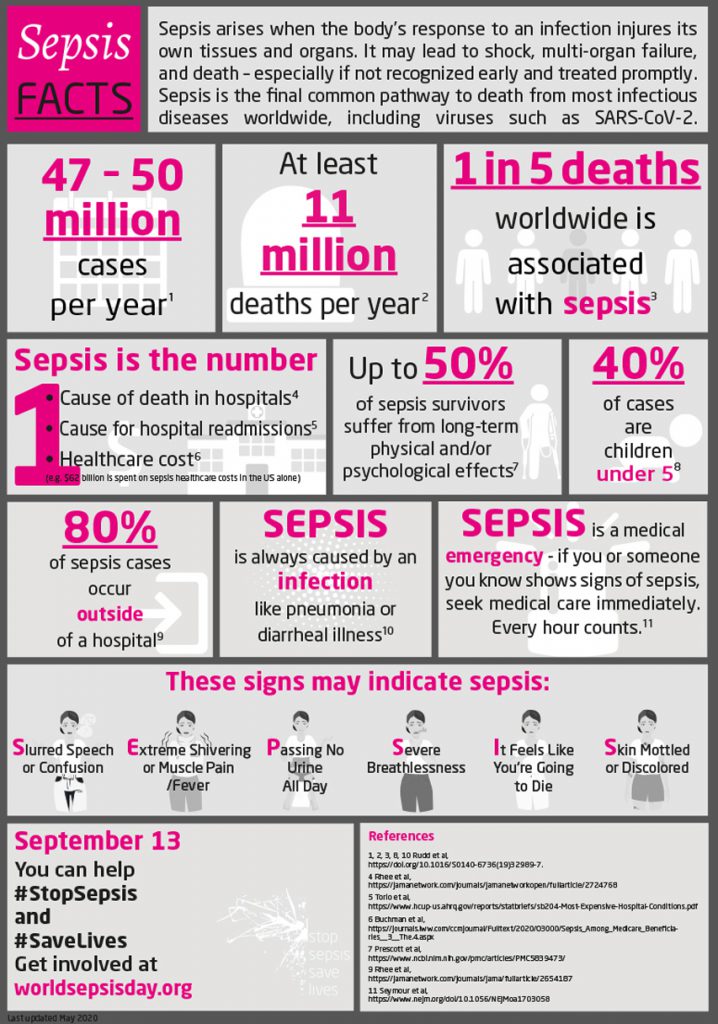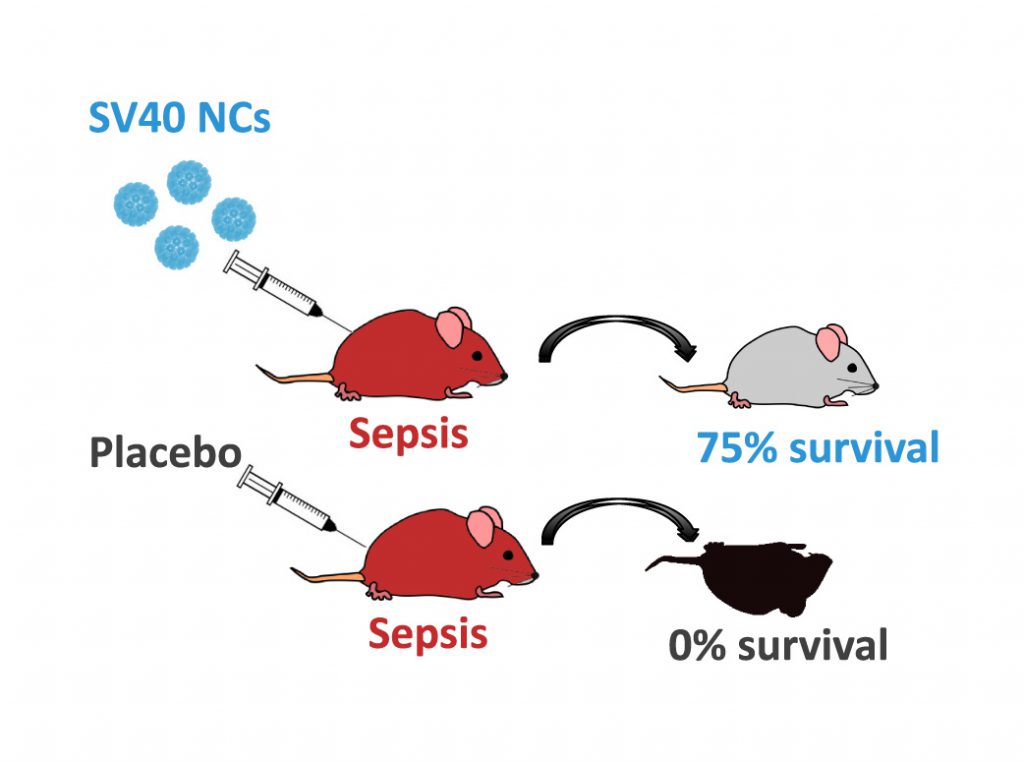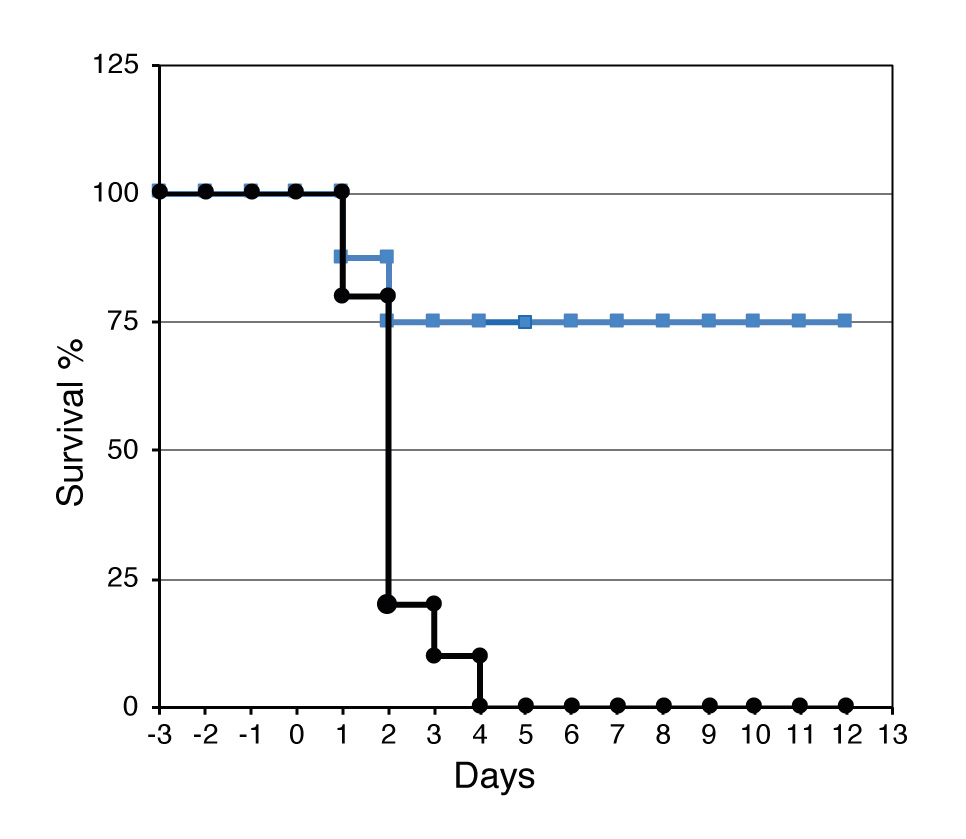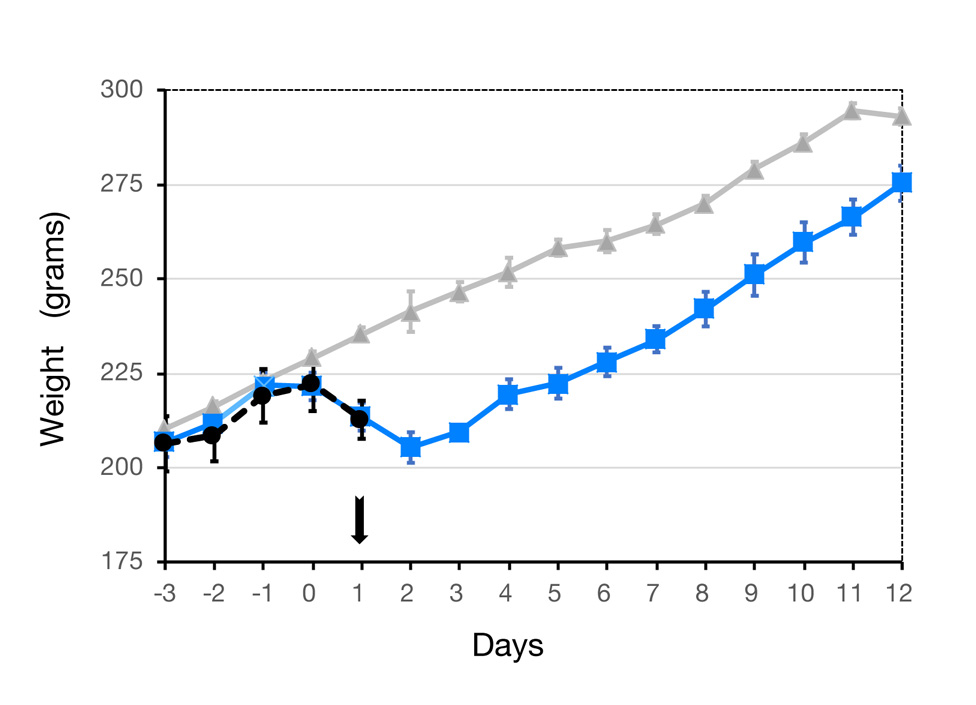
Sepsis occurs when an infection caused by bacteria, viruses, fungi or other parasites overwhelms the body’s defense system. An excessive, dysregulated immune response activates the inflammatory and coagulation cascades causing damage to the vascular endothelial system, which may lead to tissue injury, multiple organ dysfunction syndrome (MODS) and the early demise of the patient (Reviewed by Prescott HC, Angus DC. 2018. JAMA 319:62–75).
Sepsis affects between 47 and 50 million individuals annually worldwide. Eleven million die each year, at a rate of one person every 2.8 minutes. It accounts for more than 50% of hospital deaths, with mortality rates of 10–20% for sepsis, 20–40% for severe sepsis, and 40–80% for septic shock (Rhodes A et al. 2016. Crit Care Med. 2017; 45:486–552). About 40% of patients are re-hospitalized within 90 days of discharge for infection or exacerbation of heart failure (reviewed by Prescott HC, Angus DC. 2018. JAMA 319:62–75).
When possible, sepsis is managed by drainage of the infection in conjunction with antibiotic treatment. However, drainage is not always possible, and the rapid development and spread of antibiotic resistant bacteria amplifies the problem.
Numerous potential drugs, targeted at specific steps of the immunological and coagulation cascades, have been evaluated over decades, with no success (Fink MP. 2014. Virulence 5:143– 153). It appears that the complex pathophysiology of sepsis does not respond to single target therapeutic strategies.
In contrast, earlier studies (https://doi.org/10.18632/oncotarget.27448) have demonstrated that pre-treatment of septic rats with BioCapsid Therpautic’s product, the NCs, in the absence of antibiotics, was highly beneficial.

The NCs, or placebo, were administered to the rats in 3 equal doses on days -3, -2 and -1. On day 4 sepsis was induced in all the rats. As seen below, the NCs raised survival and recovery of the septic rats (—) from zero to 75%, in comparison to the placebo-treated rats (—).

The surviving rats continued to full recovery, as suggested by their re-gaining the same growth rate as the healthy, control rats.
The experiment depicted below was conducted as before. The placebo (—) or NCs (—) were administered in 3 equal doses on days -3, -2 and -1. On day 4, sepsis was induced in both groups. Healthy, untreated rats (—) served as a control group. The black arrow designates the day on which all the placebo-treated rats in this experiments died. The vertical lines represent standard error.

The underlying mechanism of the NCs is very different from that of antibiotics, the only drug presently available for sepsis. BioCapsid Therapeutics therefore anticipates that combining both therapies will yield synergism, facilitating treatment soon after sepsis diagnosis, compatible with the clinical setup. This synergism, together with the added organ support provided in intensive care units, would, we believe, lead to a significant rise in the full survival rates of sepsis patients.
